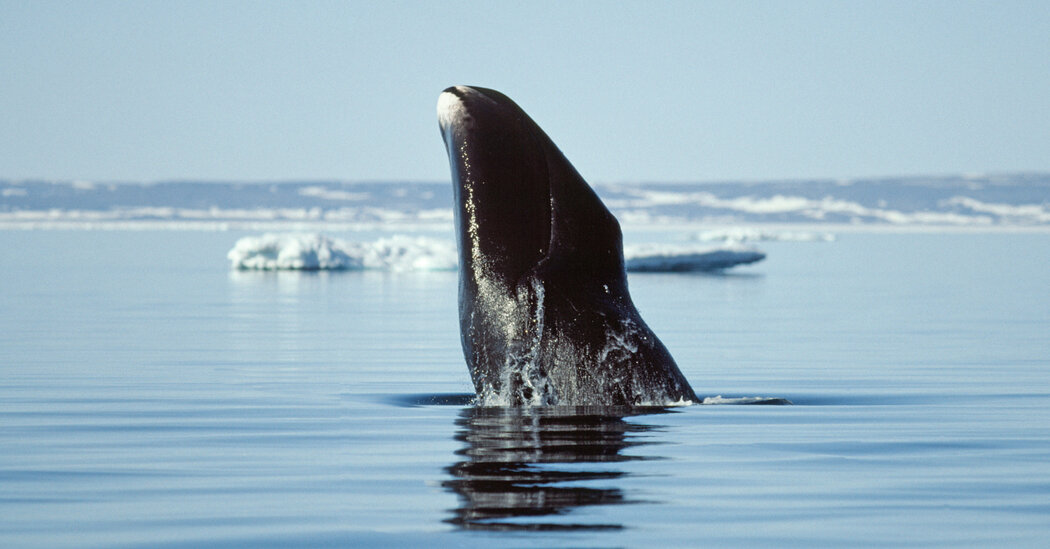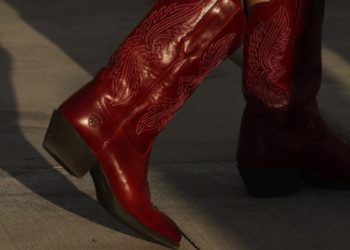For more than 1,000 years, the Inupiat people of Alaska have hunted bowhead whales in the Arctic Ocean. Over the centuries, they grew to appreciate the long lives of the animals, the longest-living mammals on Earth. Generations of hunters could recognize the same individual at sea. Inupiat captains have told researchers that a bowhead whale lives two human lifetimes.
Scientists now suspect that bowheads can live even longer than that. Some whales caught in the late 1900s had old harpoon points lodged in their blubber that dated to the mid-1800s. By measuring the molecular damage that accumulates in the eyes, ears and eggs of bowhead whales, researchers have estimated that bowheads live as long as 268 years.
A study published in the journal Nature on Wednesday offers a clue to how the animals manage to live so long: They are extraordinarily good at fixing damaged DNA.
The new study was led by Vera Gorbunova and Andrei Seluanov, a married couple who both work at the University of Rochester and study long-lived mammals such as bats, beavers and naked mole rats, along with bowhead whales. They and their colleagues are uncovering many molecular adaptations that extend animal lives. These species, the research shows, are gaining years thanks to increases in the levels of certain proteins and subtle changes in how these proteins work with others.
“We’re not talking about new genes,” Dr. Seluanov said. That finding raises the possibility that similar changes could be reproduced in humans to extend our own healthy life span. “We need to just tweak our system a little bit to resemble what we’ve found in naked mole rats or bowhead whales,” Dr. Seluanov said.
He and Dr. Gorbunova have long been fascinated by bowhead whales, not just because of their longevity but also because of their enormous size. A bowhead can weigh more than 88 tons, about the same as three garbage trucks.
For a single bowhead egg to give rise to a body of such tremendous size, it must multiply many times over, and each time it does so, there is a risk that a cell will gain a dangerous mutation that gives rise to cancer.
“They are so large that they must be protected somehow, because statistically their chance of developing cancer is very high,” Dr. Gorbunova said.
All animals have some defenses against cancer. One common strategy is for cells to monitor their own growth. If a cell starts multiplying out of control, it can destroy itself. Scientists have long wondered if bigger animals, facing a bigger risk, have evolved better defenses.
In 2015, researches found evidence that this might be the case: Elephants have extra copies of a cancer-suppressing gene called p53. That arsenal might help elephants eliminate dangerous cells by causing them to self-destruct.
Dr. Gorbunova and Dr. Seluanov wondered if bowhead whales had independently evolved the same defense. To find out, they would have to do something that had never been done before: Run experiments on live bowhead cells.
Scientists who want to study bowhead whale tissues must take the long journey to Alaska’s North Slope, where Inupiat whaling crews still hunt for bowheads to feed their communities. Scientists can ask permission to take pieces of whale tissue back to their labs. To prepare the tissue for the journey home, scientists typically freeze their samples.
But that was not an option for the Rochester researchers. “If you freeze them, that’s it. The cells die,” Dr. Seluanov said.
He and Dr. Gorbunova dispatched students to Alaska to wait for Inupiat whalers to bring an animal ashore. A whaling captain gave them permission to take pieces of bowhead skin and lung. Instead of freezing the tissue, the students packed it in ice in a cooler and then flew back to Rochester as fast as they could.
To their relief, the cells survived. The researchers grew populations of bowhead cells and then began running experiments, such as bombarding the cells with ultraviolet light, to see if the damage caused the cells to become cancerous.
The bowhead cells turned out to be resilient, but not in the way that elephant cells are. When damaged, they don’t self-destruct at high rates; instead, they prevent the damage from accumulating.
When ultraviolet light hits a piece of DNA, it can break it in two. Cells can stitch the broken ends back together, but they sometimes introduce mutations in the process. Bowhead cells, it turned out, stitch their DNA back at a remarkably fast rate, and they do it much more accurately than other species. The scientists then began searching for the molecules that the bowheads used to repair their DNA.
The discovery came as something of a surprise as the team, in a separate study, was working to understand how the cells might help the whales adapt to the frigid waters of the Arctic Ocean. (Bowheads are the only whale species to spend all year in those cold waters.)
As it turns out, bowhead whale cells produce large amounts of a protein called CIRBP. Its job is to speed up the production of other proteins that protect against cold-triggered damage to cells.
Dr. Gorbunova and Dr. Seluanov also noticed a lot of CIRBP floating around the whale’s DNA as well. They found a single study, published in 2018, suggesting that CIRBP might also help repair DNA. Indeed, when Dr. Gorbunova and Dr. Seluanov inserted the bowhead CIRBP gene into human cells, the rate of DNA repair in those cells doubled.
The DNA-fixing protein, and the gene that produces it, appear to be key to the bowhead’s longevity. Over an animal’s lifetime, damaged DNA builds up throughout its body, leading to many ailments, not just cancer. When the scientists engineered the bowhead’s CIRBP gene into fruit flies, those flies lived longer than those with the normal insect version of the gene.
The new study offers one clue for why bowhead whales live so long, even compared with other big whales. Having a big supply of CIRBP may have helped bowheads adapt to the frigid Arctic Ocean; along the way, it also turned out to fight cancer and extend their longevity.
A growing amount of research indicates that long-lived species have evolved many different strategies that extend their life spans. Earlier this month, Zhiyong Mao, a former student of Dr. Gorbunova and Dr. Seluanov, uncovered one trick that naked mole rats use to live more than 30 years — far longer than other rodents. Dr. Mao, who now works at Tongji University in Shanghai, and his colleagues discovered that naked mole rats extend their lives with a gene called cGAS.
The gene is found in many species, including us. Scientists have long known that it helps us fight infections by detecting genetic material from pathogens invading cells. But in naked mole rats, it has evolved to do a second job very well: Fix DNA.
Peter Sudmant, a geneticist at the University of California, Berkeley, who was not involved in the new studies, said that the findings raised the possibility of finding ways to improve our own health. “This is a really exciting area that has come really far, really fast,” he said. “Nature’s a beautiful experiment from which we can get all these really cool clues for new drugs and therapeutics.”
It’s possible, for example, that increasing the CIRBP in our own cells might enable them to fix DNA more like bowheads do, making us more resilient as we age. To explore that possibility, Dr. Gorbunova and Dr. Seluanov and their colleagues have engineered mice; some carry the human CIRBP gene, while others carry the bowhead version. The researchers have tinkered with the mice’s DNA so that they make more CIRBP proteins from the genes.
“They didn’t drop dead, so at least we know it’s not immediately harmful,” Dr. Gorbunova said. “But now we have to measure their longevity, to see if there are unexpected problems.”
Carl Zimmer covers news about science for The Times and writes the Origins column.
The post Life Lessons from (Very Old) Bowhead Whales appeared first on New York Times.




